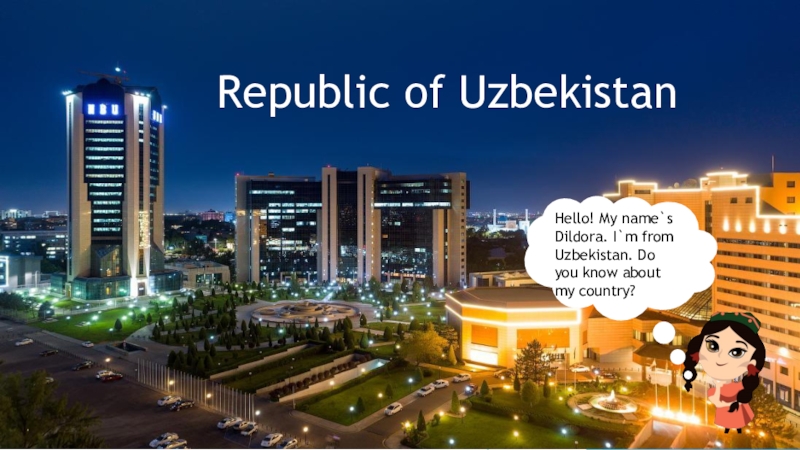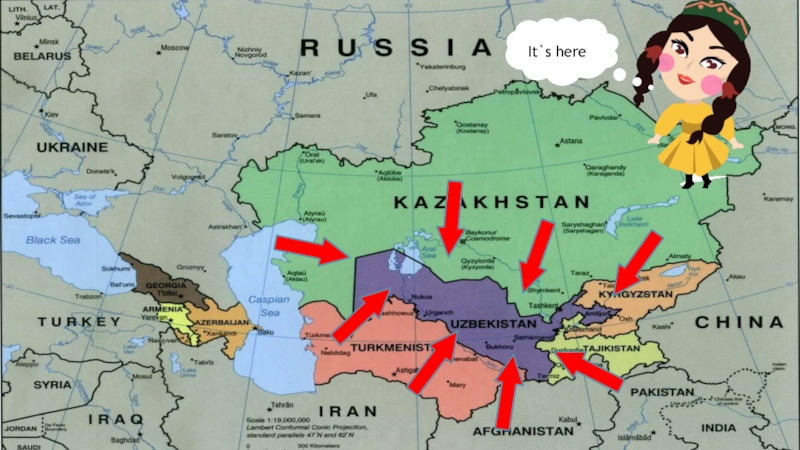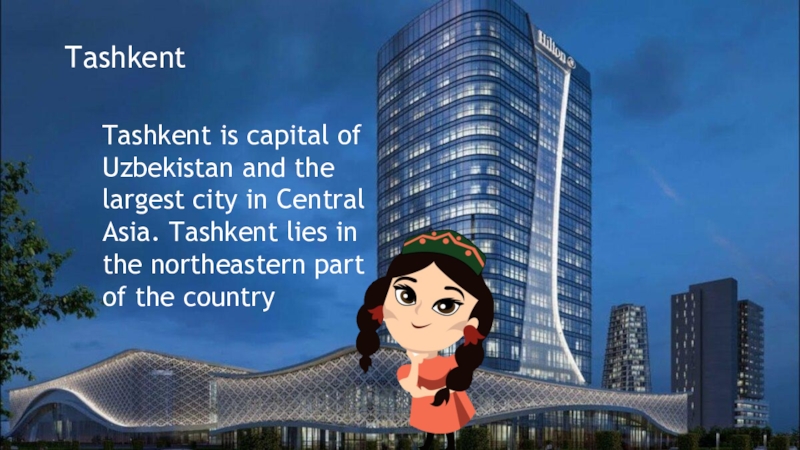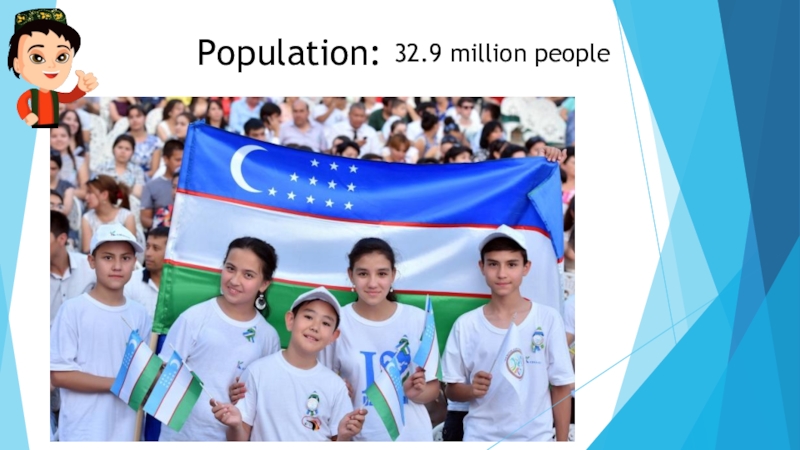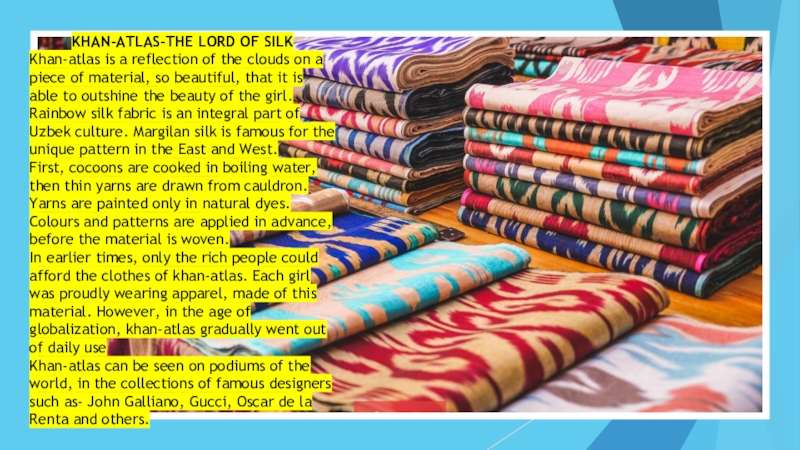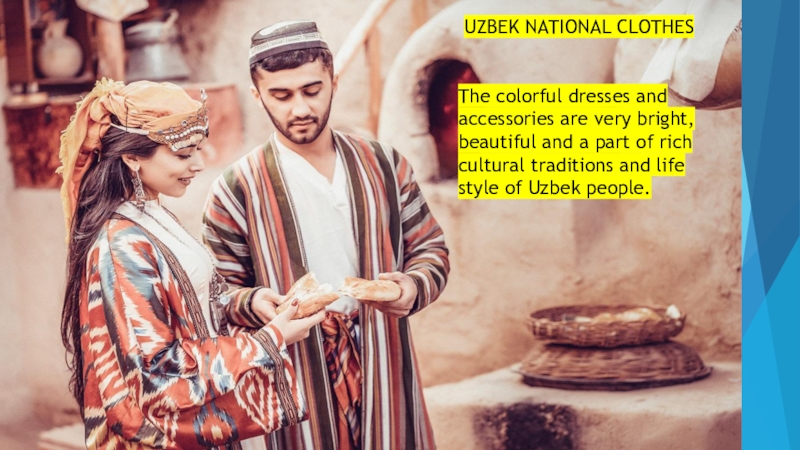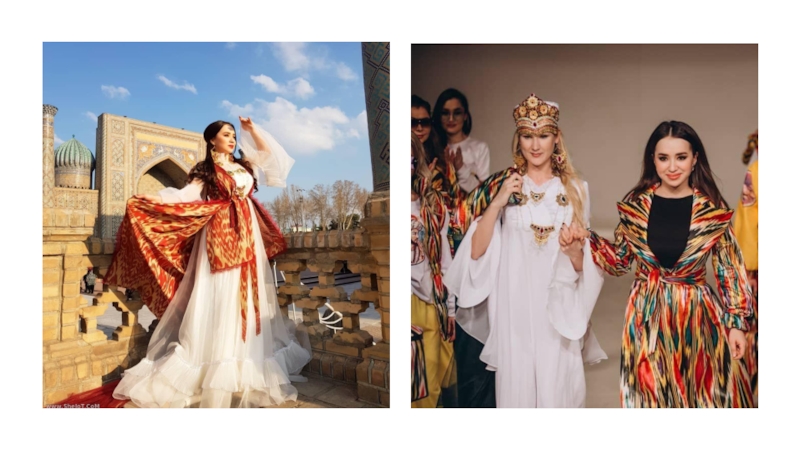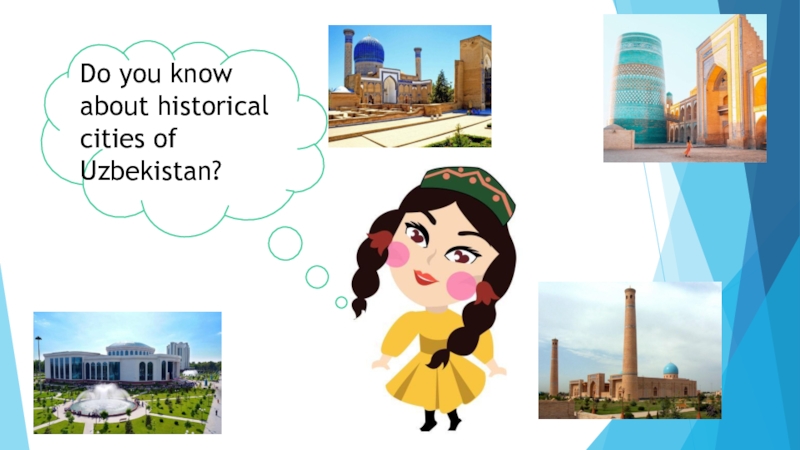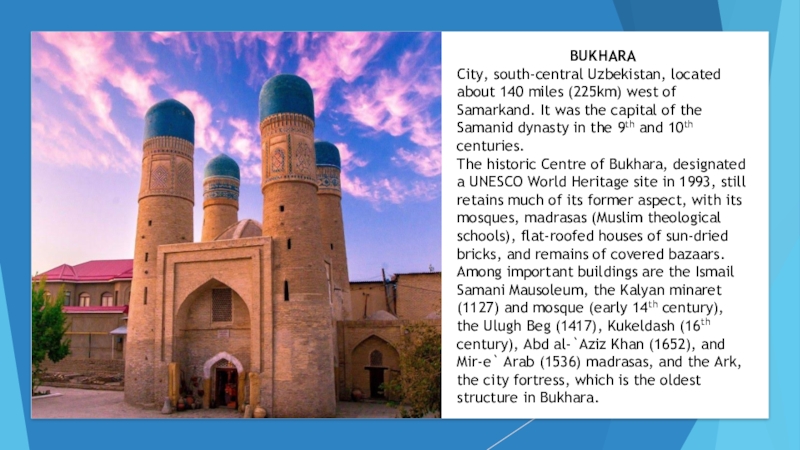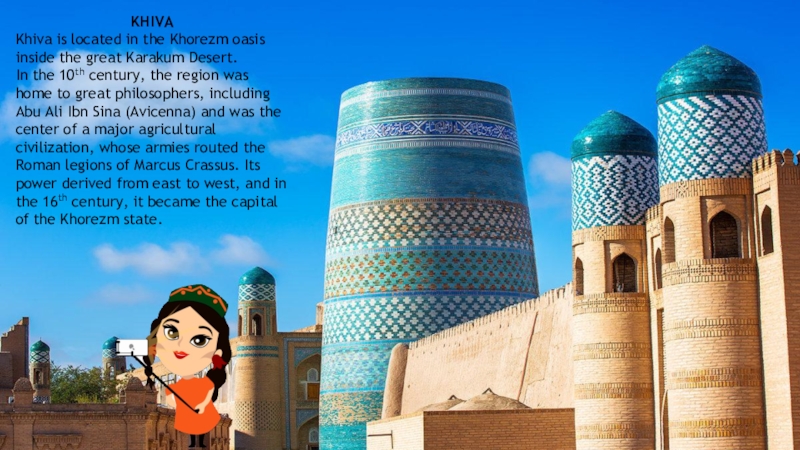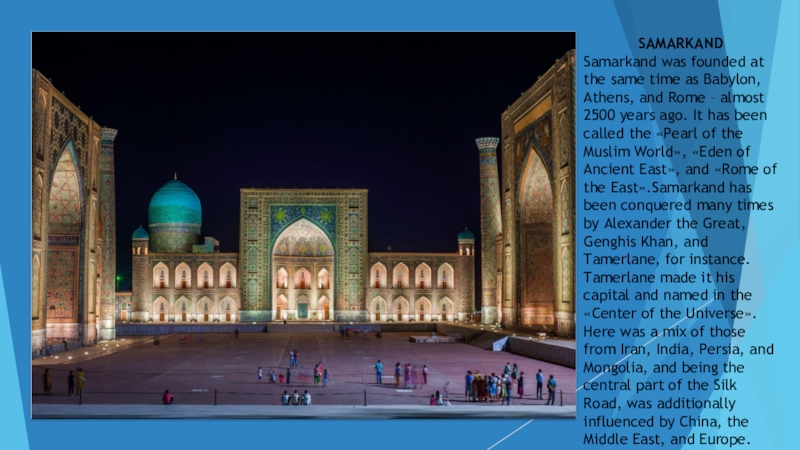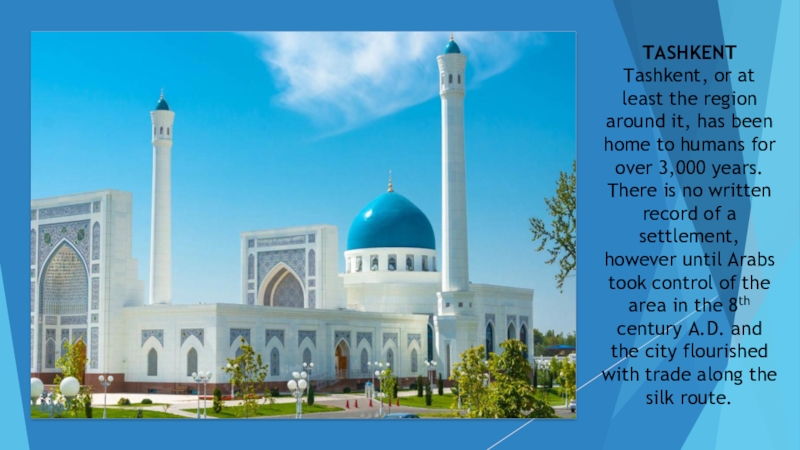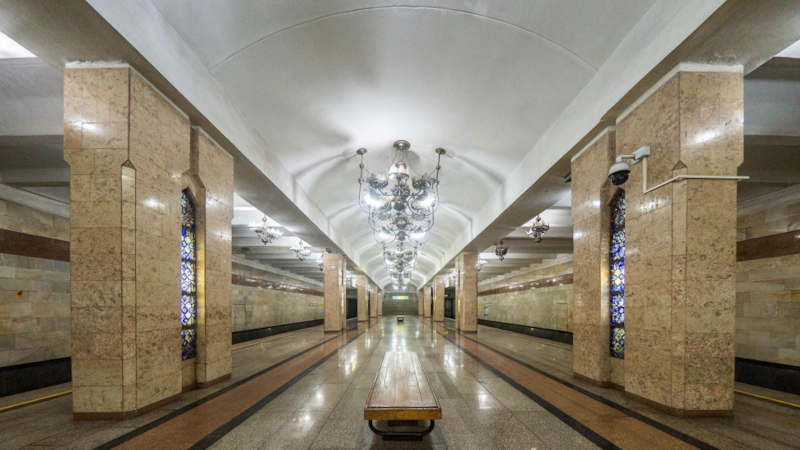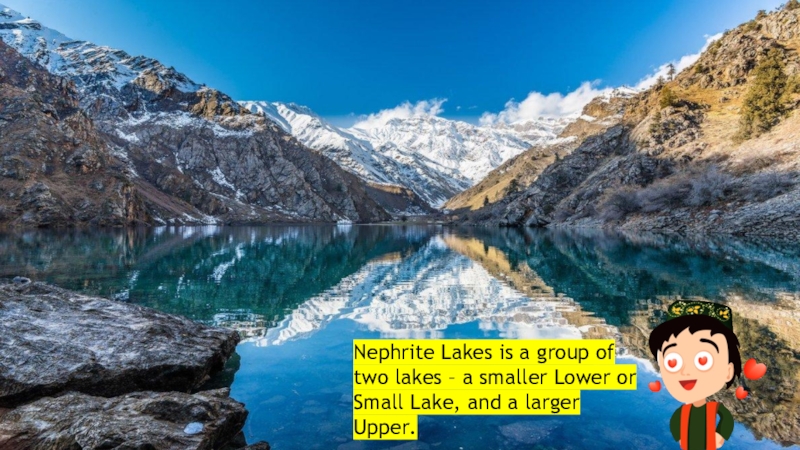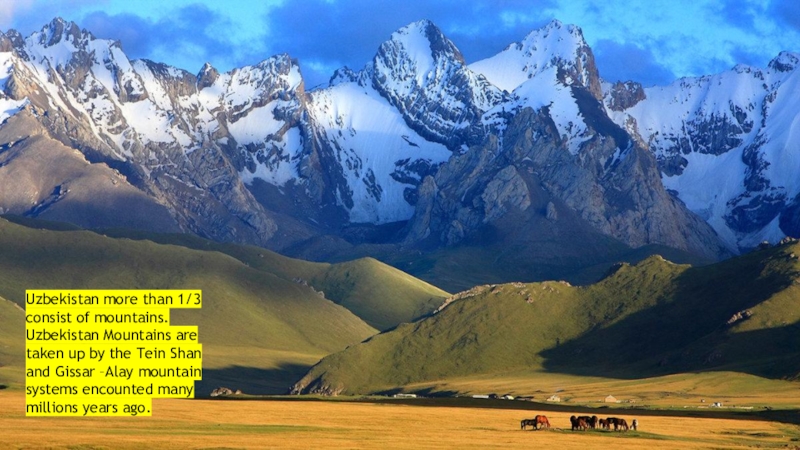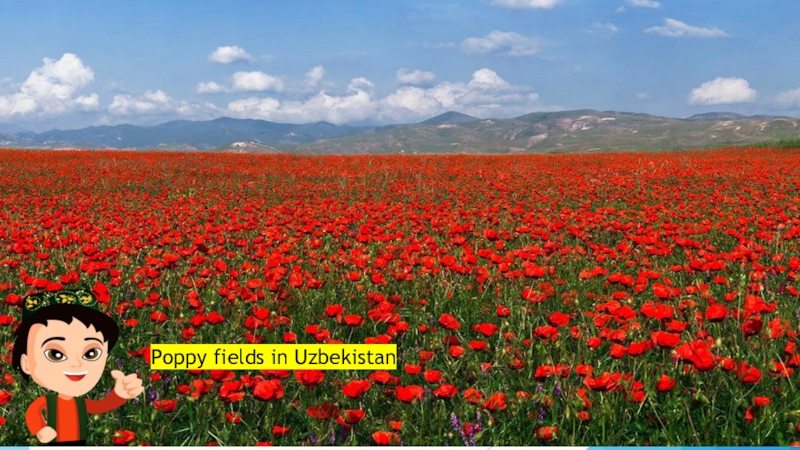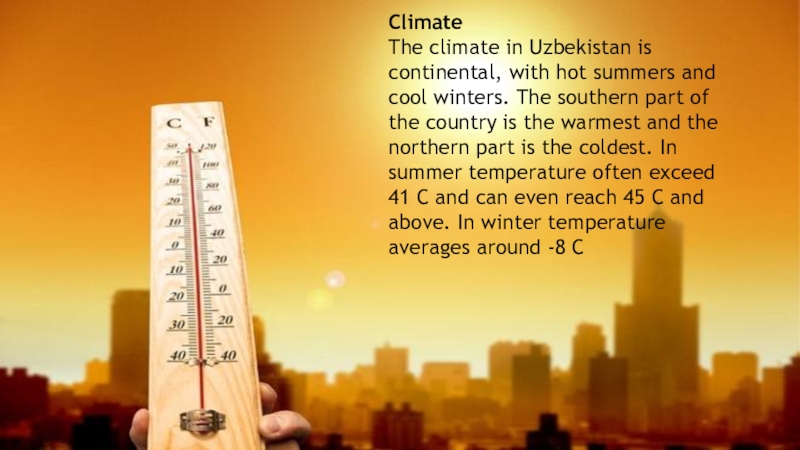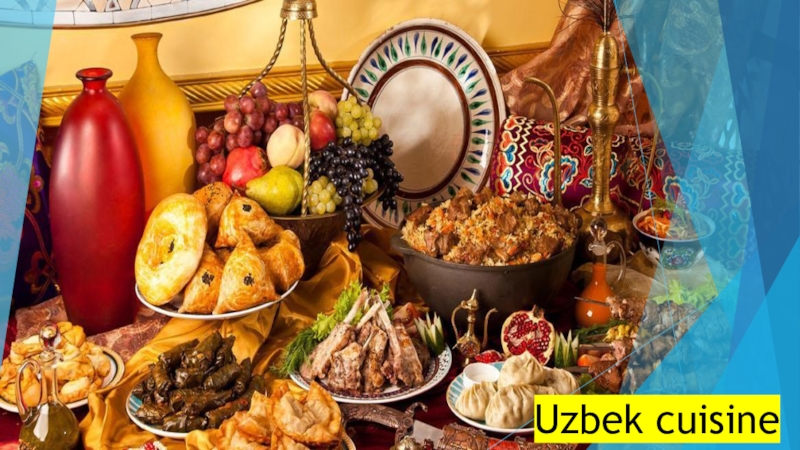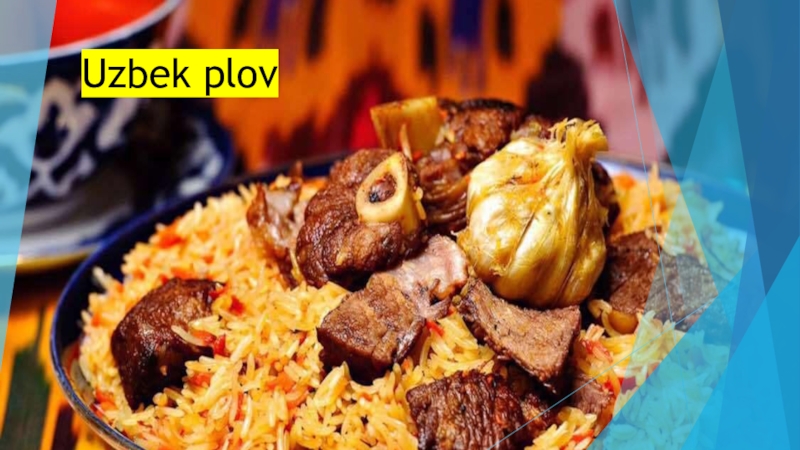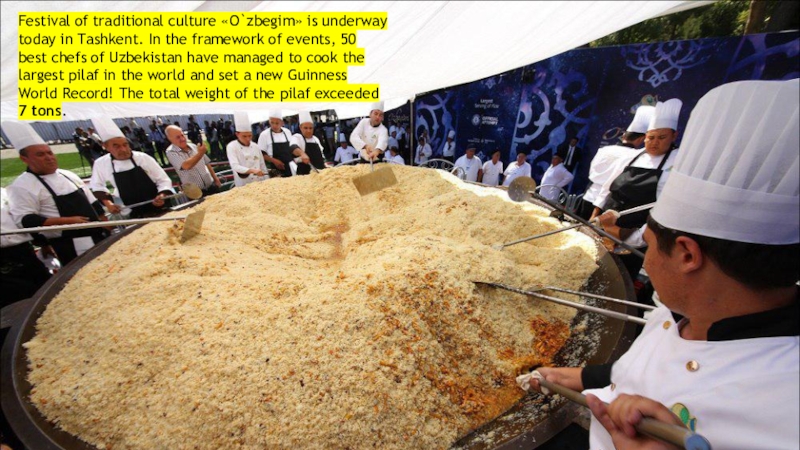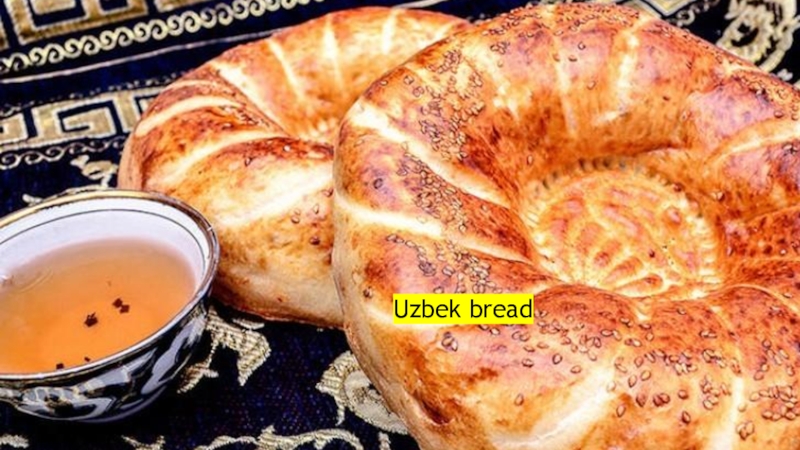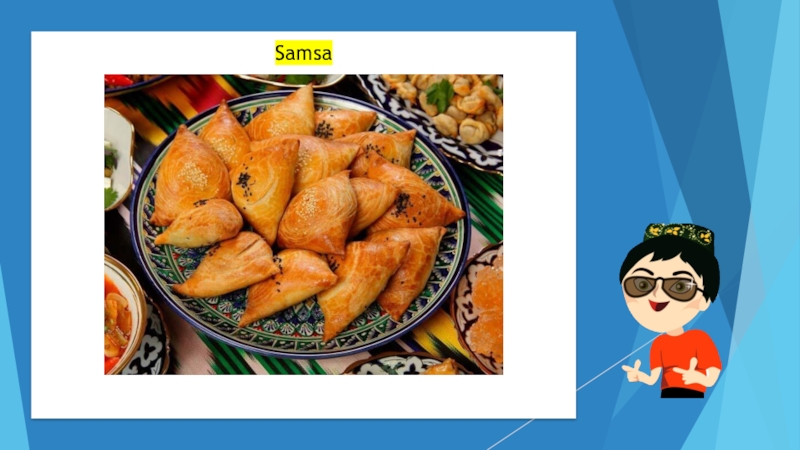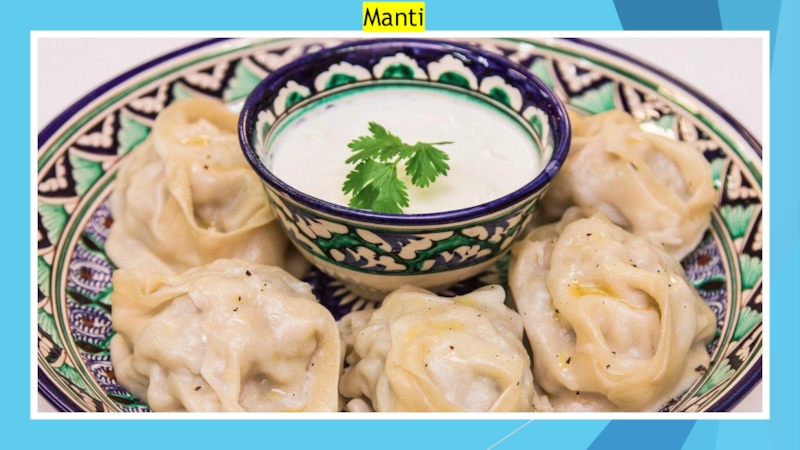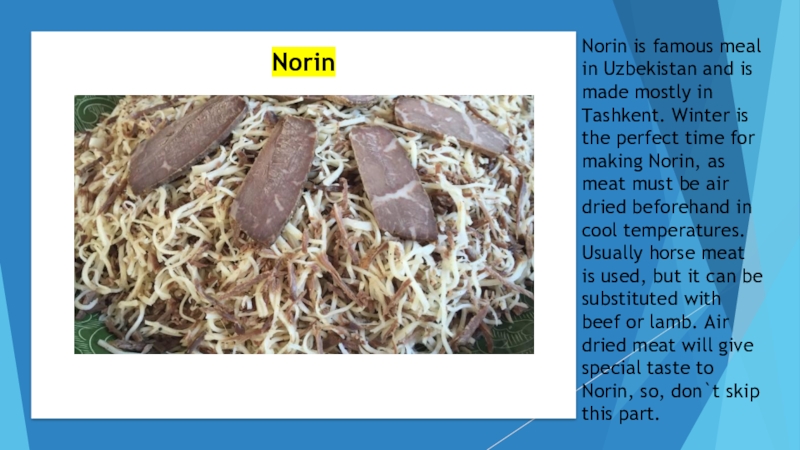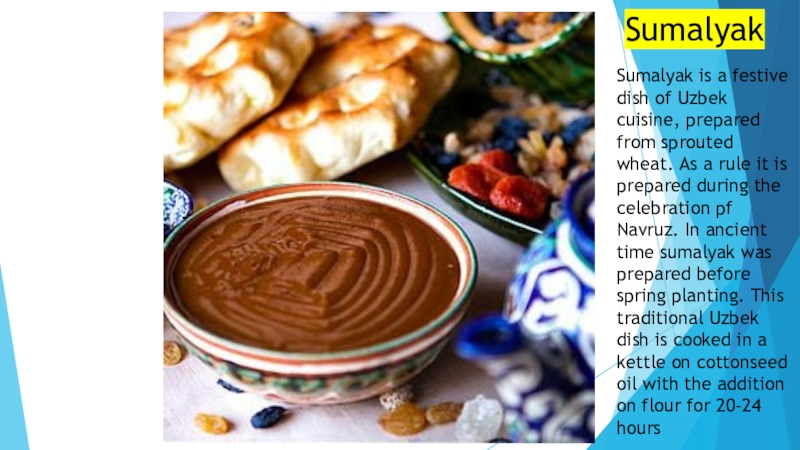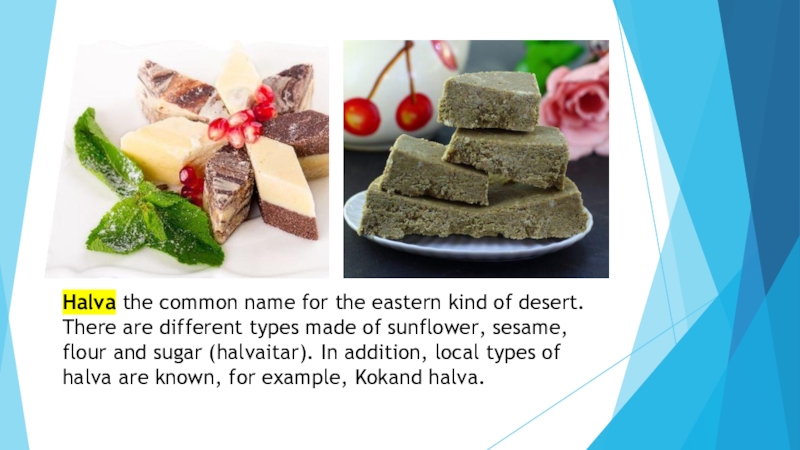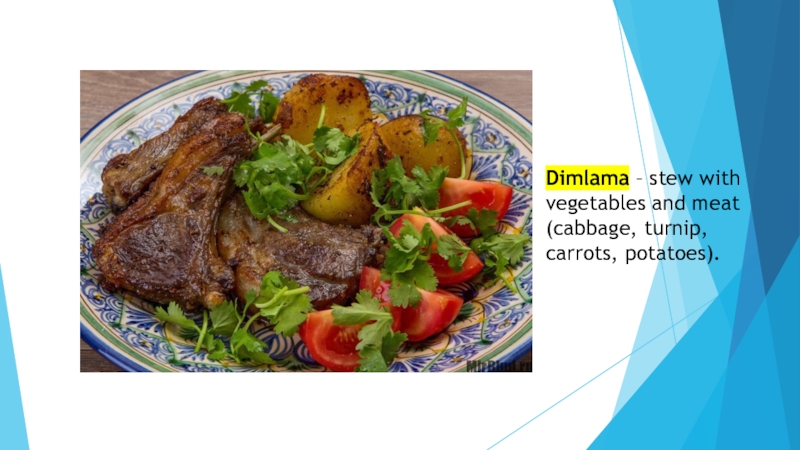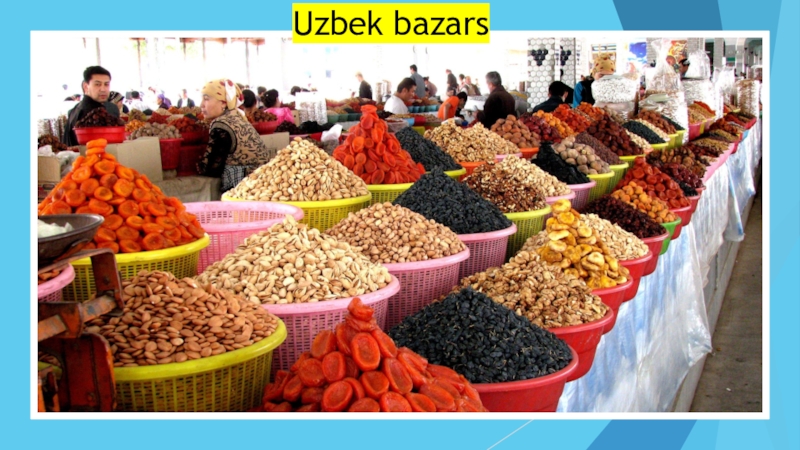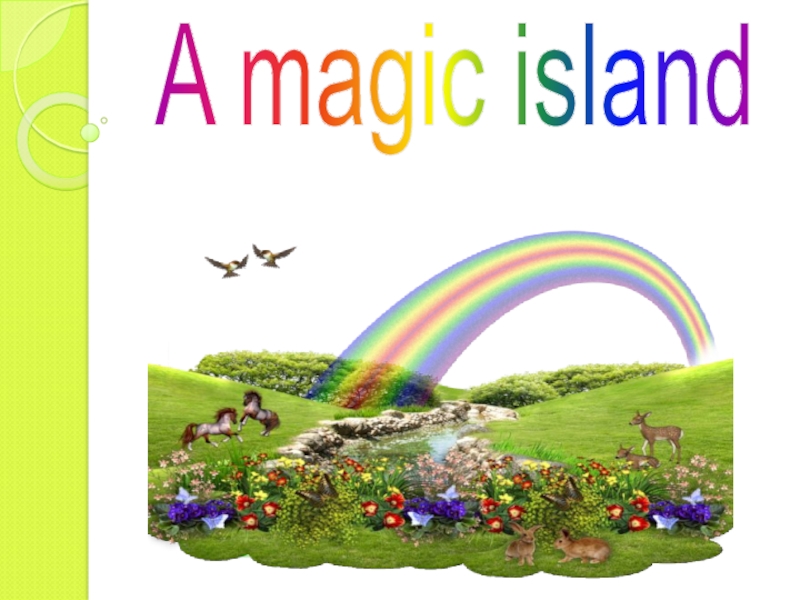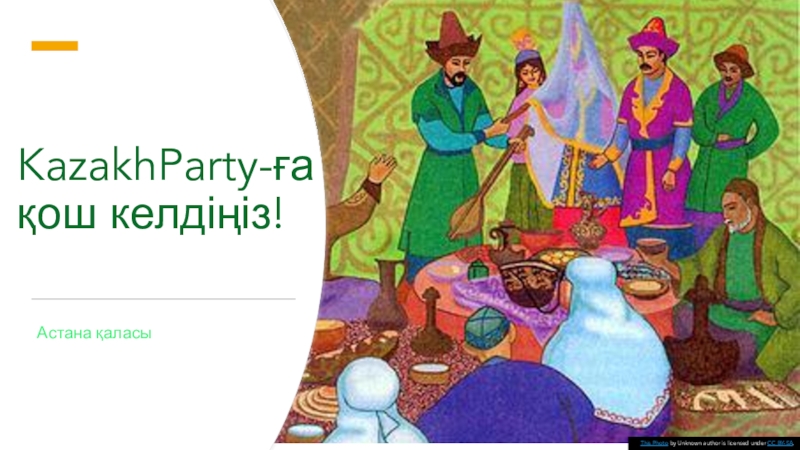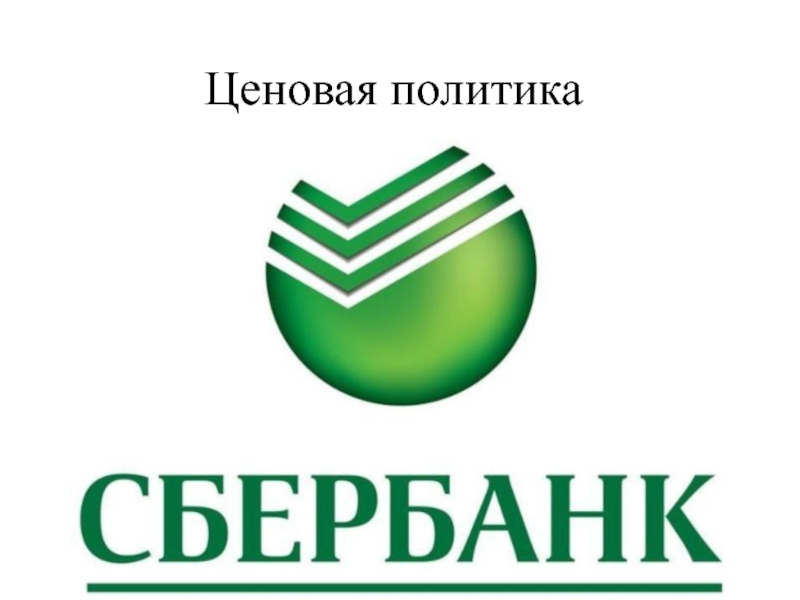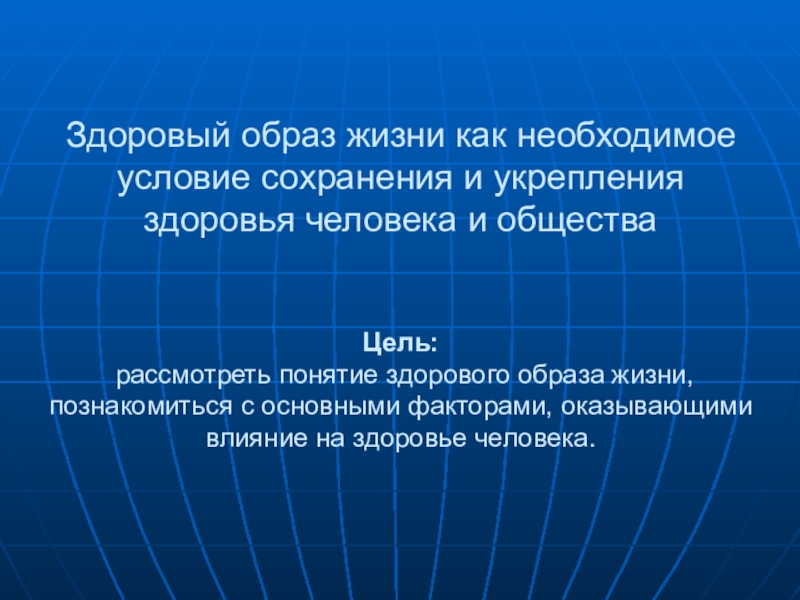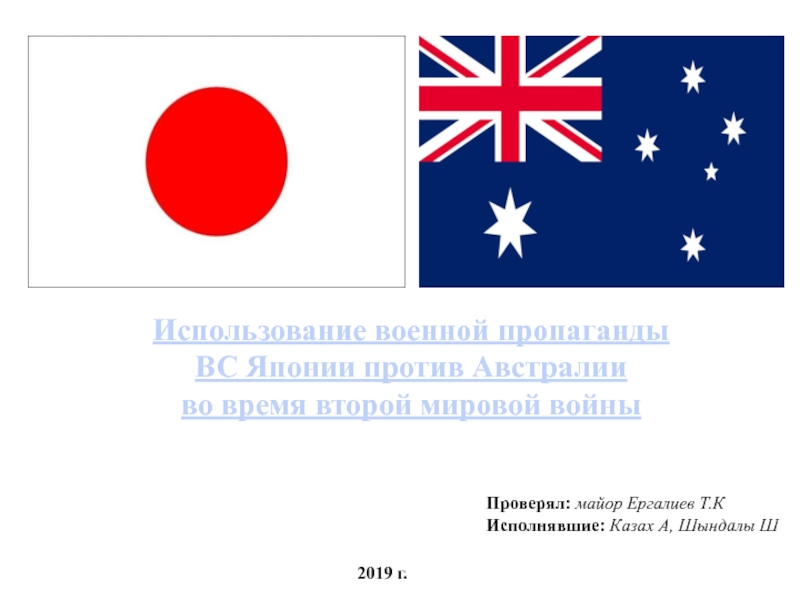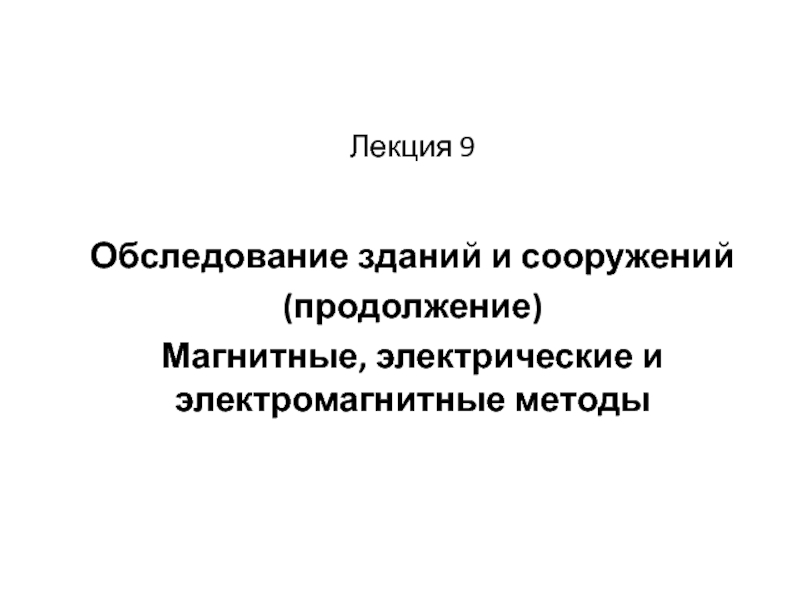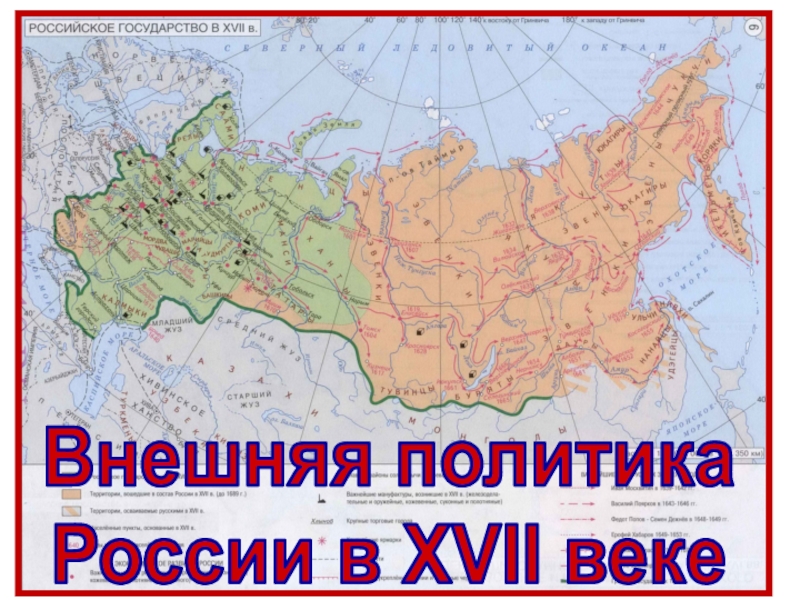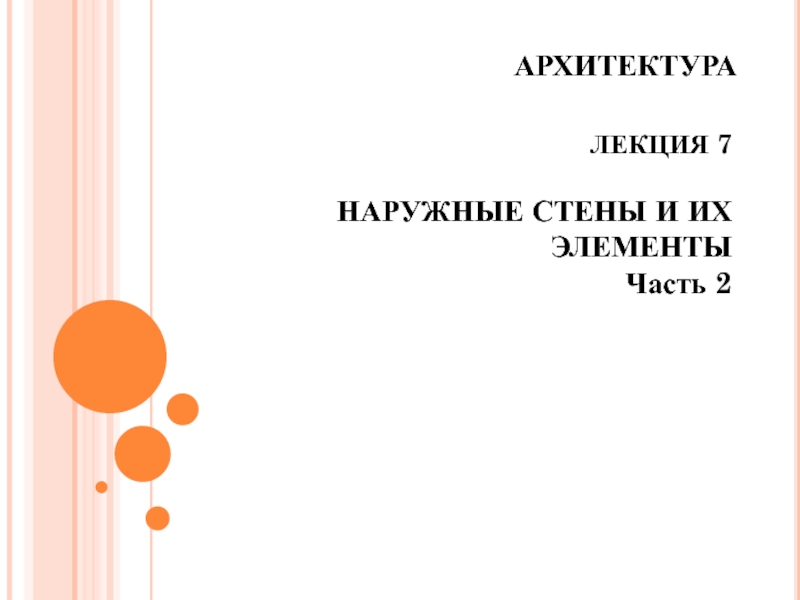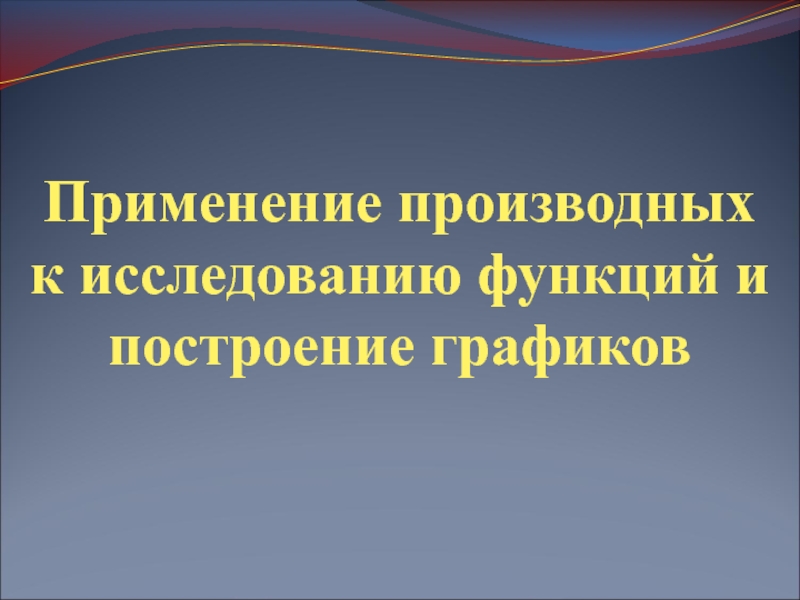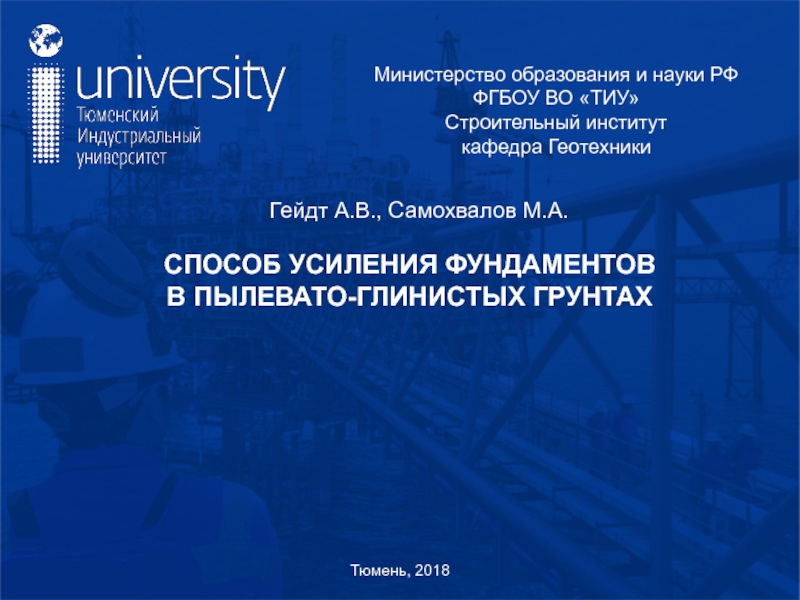Разделы презентаций
- Разное
- Английский язык
- Астрономия
- Алгебра
- Биология
- География
- Геометрия
- Детские презентации
- Информатика
- История
- Литература
- Математика
- Медицина
- Менеджмент
- Музыка
- МХК
- Немецкий язык
- ОБЖ
- Обществознание
- Окружающий мир
- Педагогика
- Русский язык
- Технология
- Физика
- Философия
- Химия
- Шаблоны, картинки для презентаций
- Экология
- Экономика
- Юриспруденция
Uzbekistan
Содержание
- 1. Uzbekistan
- 2. Republic of UzbekistanHello!
- 3. It`s here
- 4. Tashkent is capital of Uzbekistan and the
- 5. Population: 32.9 million people
- 6. KHAN-ATLAS-THE LORD OF SILKKhan-atlas is a reflection
- 7. UZBEK NATIONAL CLOTHESThe colorful dresses and accessories
- 8. Слайд 8
- 9. Do you know about historical cities of Uzbekistan?
- 10. BUKHARACity, south-central Uzbekistan, located about 140 miles
- 11. KHIVAKhiva is located in the Khorezm oasis
- 12. SAMARKANDSamarkand was founded at the same time
- 13. TASHKENTTashkent, or at least the region around
- 14. Tashkent also boasts the first metro system
- 15. Слайд 15
- 16. Слайд 16
- 17. Nephrite Lakes is a group of two
- 18. Uzbekistan more than 1/3 consist of mountains.Uzbekistan
- 19. Poppy fields in Uzbekistan
- 20. Climate The climate in Uzbekistan is continental,
- 21. Uzbek cuisine
- 22. Uzbek plov
- 23. Festival of traditional culture «O`zbegim» is underway
- 24. Uzbek bread
- 25. Samsa
- 26. Manti
- 27. NorinNorin is famous meal in Uzbekistan and
- 28. SumalyakSumalyak is a festive dish of Uzbek
- 29. Halva the common name for the eastern
- 30. Dimlama – stew with vegetables and meat (cabbage, turnip, carrots, potatoes).
- 31. Uzbek bazars
- 32. Uzbek weddings
- 33. Слайд 33
- 34. Скачать презентанцию
Republic of UzbekistanHello! My name`s Dildora. I`m from Uzbekistan. Do you know about my country?
Слайды и текст этой презентации
Слайд 2 Republic of Uzbekistan
Hello! My name`s Dildora.
I`m from Uzbekistan. Do you know about my country?
Слайд 4Tashkent is capital of Uzbekistan and the largest city in
Central Asia. Tashkent lies in the northeastern part of the
countryTashkent
Слайд 6KHAN-ATLAS-THE LORD OF SILK
Khan-atlas is a reflection of the clouds
on a piece of material, so beautiful, that it is
able to outshine the beauty of the girl.Rainbow silk fabric is an integral part of Uzbek culture. Margilan silk is famous for the unique pattern in the East and West.
First, cocoons are cooked in boiling water, then thin yarns are drawn from cauldron. Yarns are painted only in natural dyes. Colours and patterns are applied in advance, before the material is woven.
In earlier times, only the rich people could afford the clothes of khan-atlas. Each girl was proudly wearing apparel, made of this material. However, in the age of globalization, khan-atlas gradually went out of daily use
Khan-atlas can be seen on podiums of the world, in the collections of famous designers such as- John Galliano, Gucci, Oscar de la Renta and others.
Слайд 7UZBEK NATIONAL CLOTHES
The colorful dresses and accessories are very bright,
beautiful and a part of rich cultural traditions and life
style of Uzbek people.Слайд 10BUKHARA
City, south-central Uzbekistan, located about 140 miles (225km) west of
Samarkand. It was the capital of the Samanid dynasty in
the 9th and 10th centuries.The historic Centre of Bukhara, designated a UNESCO World Heritage site in 1993, still retains much of its former aspect, with its mosques, madrasas (Muslim theological schools), flat-roofed houses of sun-dried bricks, and remains of covered bazaars.
Among important buildings are the Ismail Samani Mausoleum, the Kalyan minaret (1127) and mosque (early 14th century), the Ulugh Beg (1417), Kukeldash (16th century), Abd al-`Aziz Khan (1652), and Mir-e` Arab (1536) madrasas, and the Ark, the city fortress, which is the oldest structure in Bukhara.

